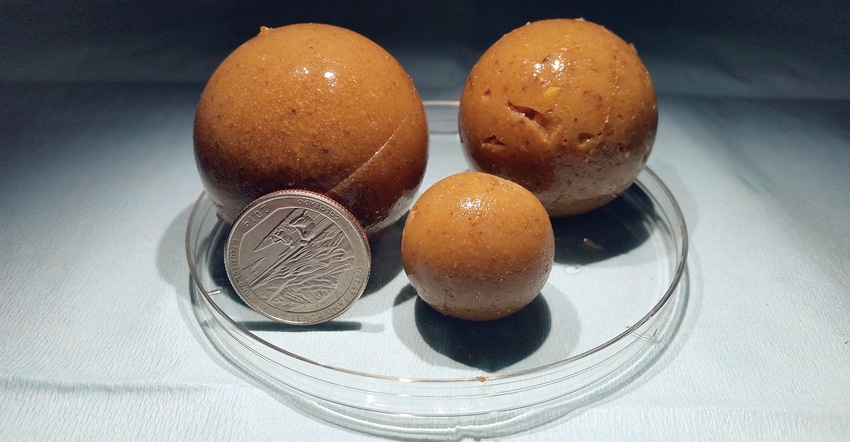
Scientists in Louisiana have discovered a way to keep sodium nitrate stable and lethal in feral hog bait. LSU AgCenter researchers are nearing delivery of an improved bait and dispensing system for feral hog eradication.
"Keeping the compound stable in an acidic environment without encapsulating it is our biggest development in seven years of research," says Glen Gentry, feral swine specialist and resident director, Idlewild Research Station, Clinton, La. "The combination of fish and water we use in the bait matrix increases acidity levels. Placing sodium nitrate in an alkaline with a pH level 7.5 or higher prevents it from converting to an inert compound, rendering it non-lethal to hogs."
Feeding studies confirm pigs prefer unencapsulated bait.
The bait is about the size of a golf ball. "It has similar consistency to gummy bear candy," Gentry says. "It will bounce when hitting the ground and will not shatter like a cattle cube, which would leave little pieces potentially to be eaten by non-target animals."
In adequate doses, sodium nitrate inhibits oxygen transfer. Affected hogs will go to sleep and die in two to three hours. Lethality trials are underway. "Research to date confirms pigs prefer our bait matrix over shelled corn," Gentry says. "We're also working on a bait delivery system."
Bait delivery
Mike Strain, Louisiana Commissioner of Agriculture and Forestry, said no feral hog bait will be used in the state until a delivery system is designed that will exclude non-target animals, specifically Louisiana's black bear population. "We tested a new system in the Atchafalaya Swamp last fall, and will again this spring to confirm its effectiveness," Gentry says.
The delivery system operates on cellular technology. "Users install a trail camera on a cell with a dedicated number. Movement around the bait station triggers the camera and texts a picture to the user's phone," Gentry says. "If hogs are present, a text code can be sent to dispense the bait."
USDA says feral hogs cause $190 million in crop damage across the country each year. Louisiana's feral hog population is approaching 700,000. Nationwide, hog population totals about 6 million across 35 states.
About the Author(s)
You May Also Like




